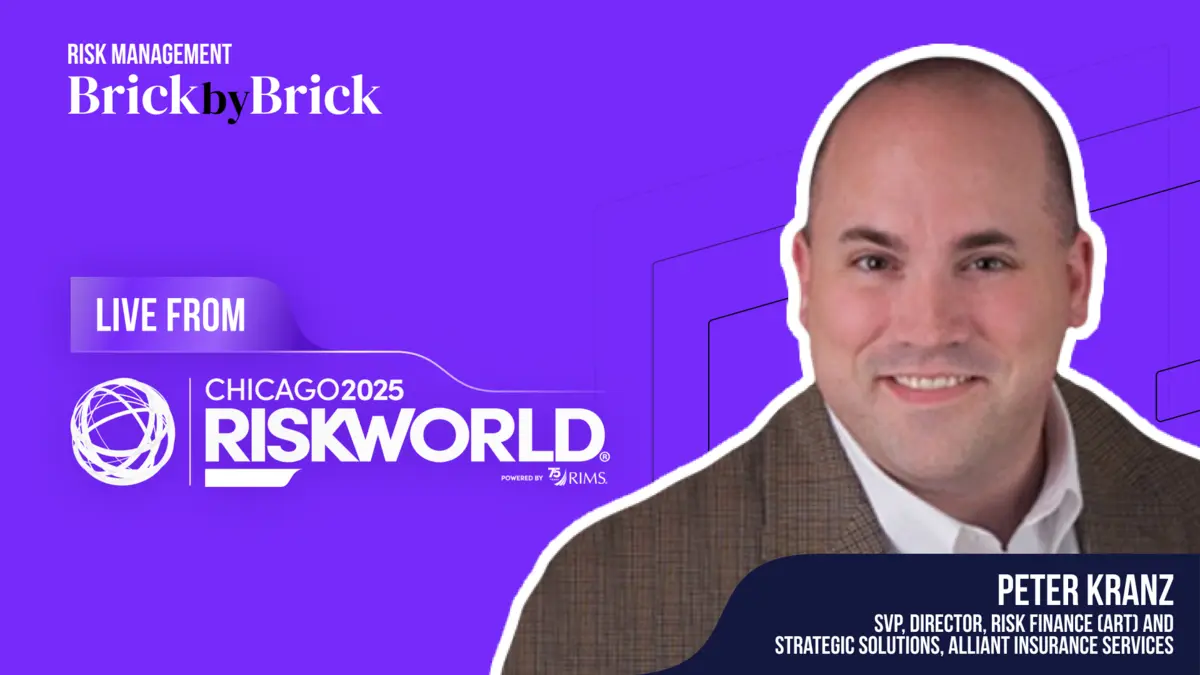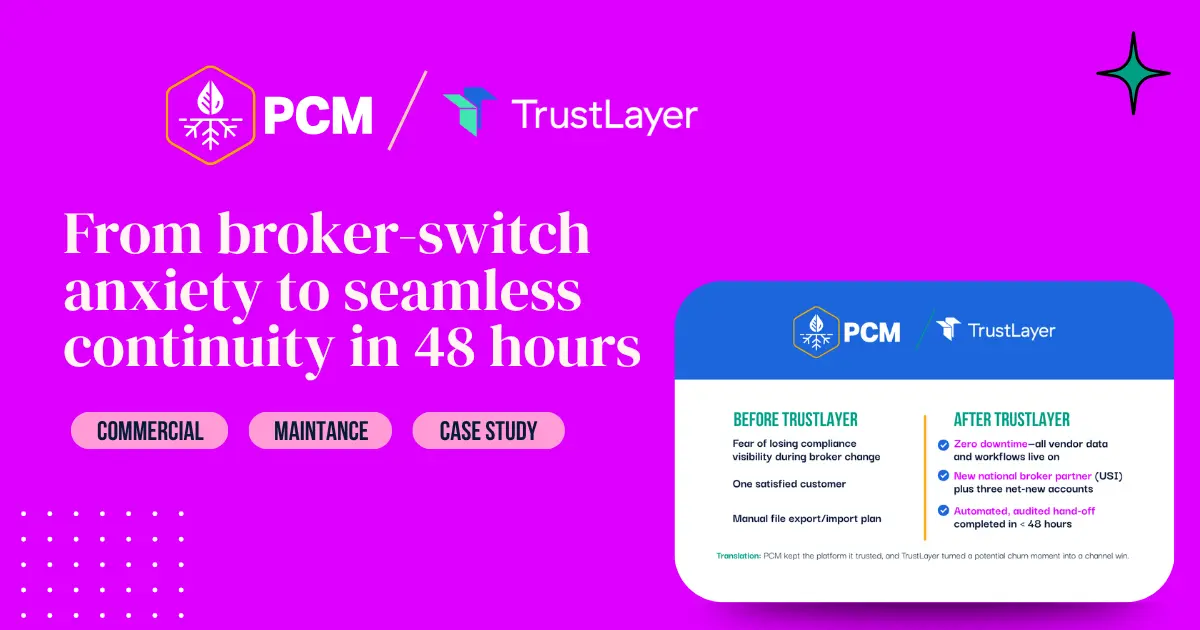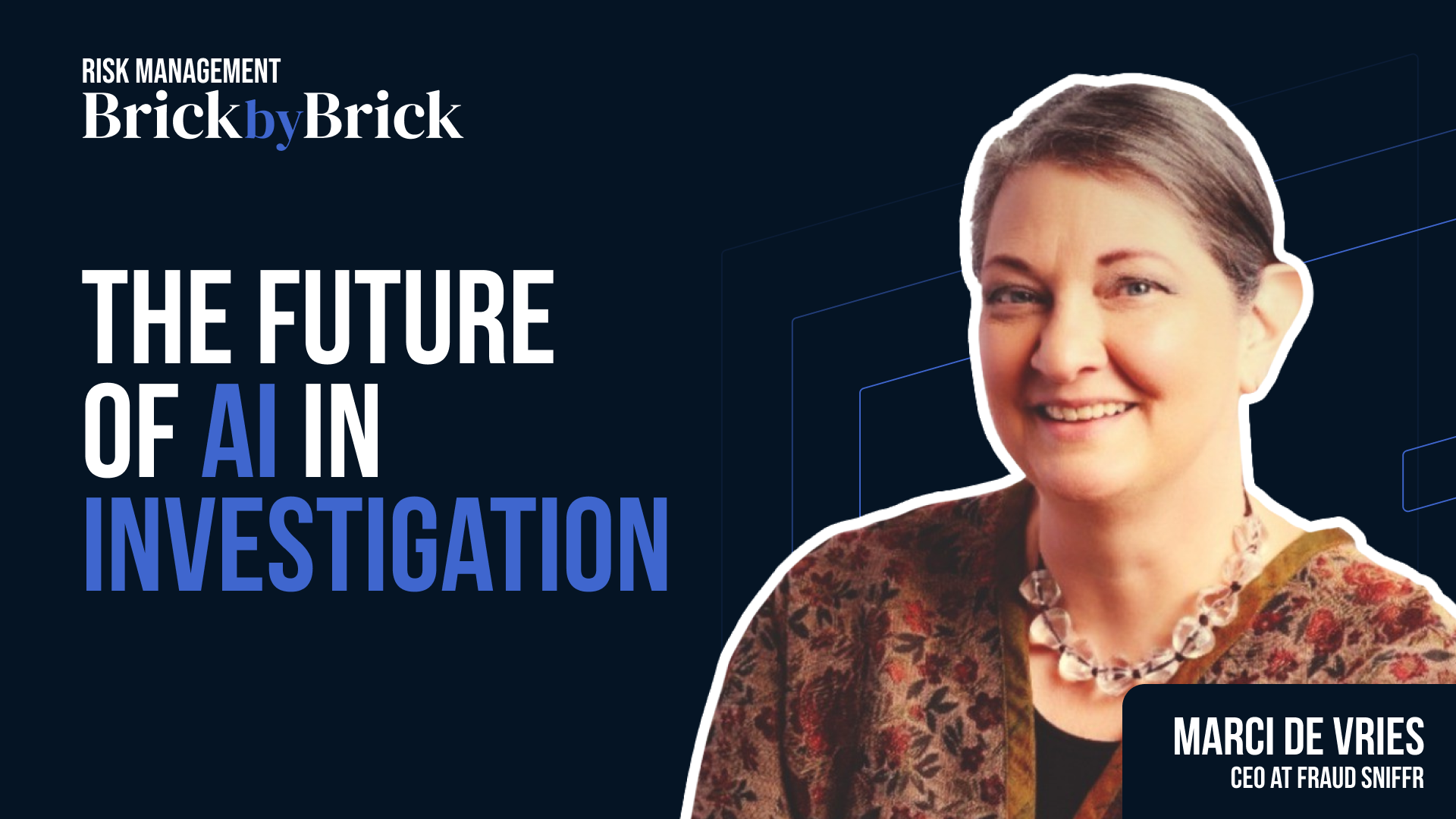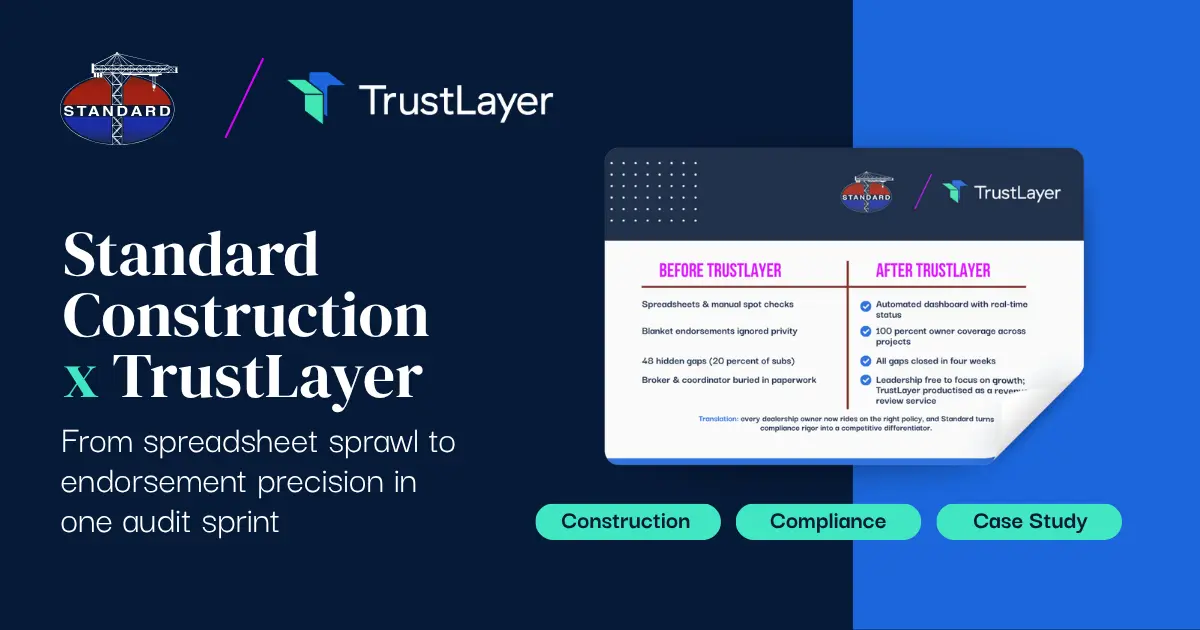 Resources
Resources Controlling Your Risk Finance Destiny: Strategic Alternatives to Traditional Insurance with Pete Kranz
Controlling Your Risk Finance Destiny: Strategic Alternatives to Traditional Insurance with Pete KranzControlling Your Risk Finance Destiny: Strategic Alternatives to Traditional Insurance with Pete Kranz

In a recent episode of Risk Management: Brick by Brick, host Jason Reichl sits down with Pete Kranz, Senior Vice President at Alliant Insurance Services, for a masterclass in risk financing strategy that could save your organization millions. From the evolution beyond "buy and pray" insurance thinking to the critical relationships that make or break risk programs, Pete shares insights from over 17 years in captive management and alternative risk financing.
To find out how TrustLayer manages risk so that people can build the physical world around us, head to TrustLayer.io.
The Evolution Beyond "Buy and Pray"
Pete opens with a reality check that should reshape how every risk manager thinks about insurance: "I'm going to go back first and say the way people used to look at insurance—buyer deductible, buyer limit—that's what it is, year over year. It has evolved into thinking about risk more holistically."
Gone are the days of cookie-cutter coverage that gets renewed without strategic thinking. Today's successful risk managers are taking control of their destiny through captive insurance companies and alternative risk structures that allow them to accrue savings and rely less on traditional insurance marketplaces.
The key insight? When you take on more risk strategically, you need mechanisms to capture the long-term benefits—and that's where sophisticated risk financing tools come into play.
The Captive Reality Check
Here's where Pete gets refreshingly honest about one of his specialties: "The thought should not be about, I need a captive. It should be, okay, what am I doing today and partnering, having the right partners to go through and say, how should I be overall looking at my risk financing?"
Even as someone who spent 17+ years in captive management and calls himself "a huge proponent of captives," Pete acknowledges the hard truth: "Guess what, it doesn't necessarily solve every problem."
This perspective shift is crucial. Instead of seeing captives as magic solutions, smart risk managers view them as tools within a broader risk financing strategy. The right question isn't "Do I need a captive?" but "How should I be looking at my risk financing holistically?"
The Overspend Problem Most Companies Miss
Pete drops a bombshell that challenges conventional wisdom: "It's gonna sound odd, but I think in many cases, a lot of companies buy too much insurance."
Take property insurance as an example. Companies often assume they need coverage equal to their total Statement of Values—say $3 billion in limits for $3 billion in assets. But Pete argues that proper actuarial modeling and geographic risk analysis typically reveals you don't need 100% coverage.
This represents a massive blind spot in total cost of risk calculations. Companies could achieve substantial savings by right-sizing coverage based on actual risk profiles rather than total asset modern risk financingvalues. The key is moving beyond gut instinct to data-driven decisions.
The CFO Connection That Changes Everything
The relationship between risk managers and CFOs has become critical as insurance premiums have skyrocketed across industries. Pete explains the dynamic: "CFOs haven't necessarily been engaged. Now what happened when we get hit the hard market, we stopped every premium, every industry going up. They start paying attention."
This creates both opportunity and pressure. When risk managers want to implement strategic programs involving more retention for long-term savings, they need CFO buy-in—especially since adverse events could happen in year one.
Pete emphasizes that risk managers must get CFO endorsement for strategic risk-taking: "The risk manager wants the CFO involved to support them because the CFO is gonna understand it, but the CFO is gonna be, like, okay. I'm gonna endorse you strategically taking risk."
The Strategic Partner Test
How do you tell the difference between a transactional broker and a true strategic partner? Pete has a clear answer based on what he sees throughout the industry.
Real strategic partners differentiate themselves by listening to client challenges first, then bringing relevant expertise and solutions. They don't wait to be asked—they proactively deliver innovation and strategy.
"Why do people change? Why do they move brokers? It's because they're not getting innovation. They're not getting strategy," Pete observes. The best partners understand that even when alternative risk structures don't get implemented (Pete estimates only 20% success rate), the education and strategic thinking still provide value.
The warning signs of a transactional relationship? Templates, cookie-cutter approaches, and reactive rather than proactive engagement.
The Leadership Philosophy That Builds Success
Perhaps most importantly, Pete shares the leadership philosophy that's guided his career: "Don't think about things selfishly. So from the client perspective, don't think about trying to drive revenue and sell stuff. Because when you do that, you kind of go down the wrong path."
His approach is simple but powerful: focus on getting clients the best advice rather than pushing products. "If you try to do things the right way, try to get the best advice, then all the other stuff's gonna follow."
This philosophy extends to developing talent within organizations. Pete emphasizes recognizing and supporting emerging leaders rather than hoarding the spotlight—a approach that builds stronger teams and better client outcomes.
Final Thoughts
The insurance industry has evolved far beyond the old "buy deductible, buy limit" mentality, but many organizations haven't caught up. The companies that thrive will be those that think strategically about risk financing, build the right partnerships, and make decisions based on data rather than assumptions.
As Pete puts it, success comes from asking better questions, working with the right partners, and remembering that tools like captives are means to an end—not ends in themselves. The goal isn't just transferring risk; it's taking control of your risk finance destiny.
To hear more strategic insights from someone who's spent decades helping companies rethink their approach to risk financing, tune in to this episode of Risk Management: Brick by Brick.
👉 Spotify: https://bit.ly/4lEYTmX
👉 Apple Podcasts: https://apple.co/3GWF1N9
👉 YouTube: https://youtu.be/9KF6SKqtktg
Podcast Host: Jason Reichl
Executive Producer: Don Halliwell















